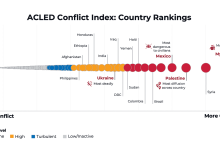Reaching for a Green Recovery: What Holds Back Progress in 10 EU Recovery and Resilience Plans
The networks of environmental protection non-governmental organizations in Europe, Climate Action Network (CAN) Europe and CEE Bankwatch Network, have prepared a new report – ‘Reaching for a Green Recovery’ – on environmental investments in the NRRPs of 10 EU countries. It shows that the efforts of Member States to direct the funds from the Recovery and Resilience Facility, worth EUR 672bn, to climate actions are undermined by investments that could harm the environment and climate.
The Recovery and Resilience Facility (RRF) entered into force in February 2021. It has financed reforms and investments in Member States from the start of the COVID-19 pandemic and will continue to do so until 2026.
To finance a proportion of it, the European Commission, on behalf of the EU, borrowed for the very first time on capital markets. This facility enables Member States, in particular those with limited fiscal space, to finance additional investments, allowing them to recover from the pandemic-induced economic and social crisis and make their economies and societies more resilient.
To benefit from the Facility, Member States had to submit national recovery and resilience plans to the European Commission. Each recovery plan sets out the reforms and investments that Member States commit to implement by the end of 2026, and Member States can receive financing up to a previously agreed allocation.
At least 37 per cent of the funds must be earmarked for climate action and be accompanied by reforms that will maximise the impact of these investments. None of the reforms or investments should harm the environment.
The RRF therefore provides an important opportunity for EU Member States to accelerate necessary investments for the green transition. But are they really making full use of this money?
The report analyzes ten plans presented to the European Commission by the Czech Republic, Hungary, Italy, Latvia, Portugal, Romania, Slovakia, Slovenia, and Spain and approved by the Council to access the funds. In Romania, Italy and Spain, proposals were made to expand renewable energy sources and amend the legislation, while Slovenia and Lithuania included public transport reforms.
In each country’s analysis, the authors look at the key investments and reforms for climate action included in the national recovery plan, but also the important reforms and investments but which are not part of the plan. They also analyse the quality of the Commission’s assessment of the national plans from a ‘do no significant harm’ principle perspective, as well as the extent to which the recovery plan can pave the way for an improved national energy and climate plan (NECP), since Member States must revise their NECPs by 2023 to reflect the higher EU climate 2030 targets agreed on in 2020. Each country analysis also includes recommendations addressed respectively to the Member State concerned and to the European Commission.
The facility was established to help Member States counteract the effects of the pandemic and finance a green recovery. It is necessary that at least 37% of a country’s investments address climate urgency and that all reforms and investments included in the national recovery plans to no harm the environmental goals.
However, several countries have prioritized measures such as investments in fossil gas-fired thermal power plants, to the detriment of renewable energy sources. For example, Italy, Romania, Czechia, and Slovakia plan to finance the infrastructure for fossil gas, as part of the broader building renovation and heating measures, risking financially unrecoverable investments and contradicting climate targets, the mentioned report shows.
“We urge Member States and the European Commission to ensure a genuine green recovery throughout the implementation of the recovery plans and other EU funds. At the very minimum this requires increasing the share of climate positive investments while fully respecting the ‘do no significant harm’ principle. Indeed, it is critical to realize that the recovery plans’ investments earmarked for the green transition often pale in comparison to the green investment needs of Member States,” said Isabelle Brachet, EU Fiscal Reform Policy Coordinator at CAN Europe.
MAIN FINDINGS
The analysis shows that there has been a purported effort to direct the recovery plans towards climate action – even if the methodology used to determine the exact percentage of climate action under the various plans is questionable in some respects and could be improved in the future.
But this analysis equally shows that there are some recurring concerns that should be duly considered by Member States and the European Commission when implementing the plans, and when programming other EU funds.
Indeed, while many measures go in the right direction, the investments earmarked for the green transition often pale in comparison to the green investment needs of Member States. Several country assessments suggest that only a fraction of the investments needed for achieving the targets set out by respective national energy and climate plans (NECPs) are covered by the recovery plans – this is all the more concerning considering that these NECPs generally lack ambition and will soon be revised in order to reflect the newly agreed 2030 greenhouse gas emission reduction target and the outcomes of the ongoing negotiations of the Fit for 55 package.
Furthermore, as analysed more extensively in a Green 10 briefing and evidenced throughout the country assessments in this report, several investments are likely to harm the environment and climate, casting doubt on whether the ‘do no significant harm’ principle was thoroughly implemented.
First, several Member States are using the RRF to support fossil gas-related investments, such as fossil gas boilers as part of broader measures for building renovation and heating. Although according to the RRF regulation and its Technical guidance these investments could be financed in exceptional cases (e.g. when fossil gas boilers would have significant greenhouse gas and health benefits), some Member States are using this exception to prioritise investments in fossil gas over those in renewables sources. Extensive lock-in of gas infrastructure contradicts climate objectives. There should be no support for fossil fuels by EU funds.
Second, many plans dedicate important resources to hydrogen. Although the development of renewablesbased hydrogen is necessary for sectors that are difficult to electrify, a number of investments included in certain recovery plans are problematic. First, several recovery plans intend to finance fossil gas-based hydrogen and blended hydrogen instead of renewables-based hydrogen infrastructure, or fail to specify whether investments will be channelled exclusively to such hydrogen. Indirectly, these investments will consequently provide support to fossil gas. Second, even in cases where renewables-based hydrogen is prioritised, recovery plans fail to consider whether existing solutions that use renewables-based electrification are cheaper and greener. Considering its limited availability, inefficiency and high cost, hydrogen should only be prioritised in sectors such as heavy industry like steel and chemicals, as well as aviation and shipping – only once other options are exhausted. However, a number of recovery plans seem to make hydrogen roll-out a centrepiece of green transition investments, without maximising the potential of renewables-based electrification, the expansion of renewable energy capacity, and energy efficiency investments. As such, the authors recommend that Member States and the European Commission strike the right balance between the financing of hydrogen infrastructure (when based on renewables) and other crucial investments for the electrification of the energy system, the expansion of renewable energy capacity and energy savings. Further, recovery plans should include an assessment of hydrogen needs, including the sectoral end use of hydrogen and whether existing alternatives could be cheaper and more efficient.
Third, most of the plans analysed include very little support to biodiversity and nature conservation, which is problematic per se, but also because these play an important role in fighting climate change and building resilience to climate change impacts (adaptation). Even worse, some of the plans’ projects deemed positive for climate mitigation or adaptation pose important risks to nature and biodiversity (such as irrigation projects, a new hydropower plant and poorly planned flood protection projects). Projects that may harm biodiversity and nature should be modified or not be funded under the RRF. The ‘do no significant harm’ principle should be applied more strictly to ensure that this is the case. The EU’s nature conservation and biodiversity protection should be an integral part of the various EU funding facilities. This will help meet the EU 2030 biodiversity and climate objectives.
Fourth, vis-à-vis clean mobility, certain recovery plans place a heavy emphasis on infrastructure for accelerating the penetration of electric vehicles, but proportionally dedicate more limited funds for public transport, shared transport and active mobility investments. While electric vehicles’ penetration should be accelerated, there should also be more efforts to encourage the use of public transport, shared transport and active transport modes (biking, walking), especially in cities. The objective should be to reduce road traffic and individual car use – and along with infrastructure investments, reforms such as regulation and taxation have a role to play.
Fifth, energy communities and prosumers are supported in some of the recovery plans, often with insufficient resources, but they are completely ignored in others. In short, the role of citizens in the energy transition is often neglected. This is regrettable for at least two reasons: on the one hand because decentralised energy has a strong untapped potential for the energy transition; and on the other, because such investments would ensure that the benefits of recovery spending are widely diffused throughout societies, promoting an inclusive recovery. Citizen-led energy communities need to be supported much more robustly through various EU funding instruments, national budgets and domestic laws.
Last but not least, civic participation has been unsatisfactory in the design of all the plans analysed, to varying degrees. A green and just recovery from the crisis will not happen without the people. Civil society organisations, social partners and other stakeholders have a key role to play to ensure a successful recovery in Europe. In particular, governments need to better inform civil society, which needs to have a say in the preparation of the measures included in the recovery plans, and be involved in monitoring the implementation of the plans.
NRRP in Romania
According to Bankwatch Romania, NRRP includes the construction of a fossil gas distribution system in Oltenia, which has only been accepted because it will be partly used for the transport of green hydrogen. It is true that the development of hydrogen based on renewable sources is necessary for the sectors difficult to electrify, such as the production of steel, chemicals, aviation, and shipping. Romania’s plan is to use hydrogen mixed with fossil gas for heating, where it is inefficient and costly.
At the same time, the report also identifies positive measures for energy transition.
Specifically, the measures for a green economic recovery in Romania’s NRRP officially cover 41% of the budget, but according to the Green Recovery Tracker tool, which uses a green labeling methodology more rigorous than the European Commission, the plan contains sustainable funding in a share of only 24%, while 12.8% of the funds will have a negative environmental impact.
The report also analyzes the decision-making transparency on NRRP reform planning and implementation. In Romania, implementation on certain components of the plan has already started, but there is no system for the monitoring and transparency of the proposed investments.
“Investments in fossil gas hinder energy transition. On the one hand, we invest in infrastructure that we will replace after 10 years from commissioning, so the cost of transition doubles, and on the other hand fossil gas has a significant impact on the climate system through the carbon and methane emissions. Sustainable development, with a positive impact on citizens and environment, can only be done through renewable energy, in combination with other storage, energy efficiency, digitization and production decentralization measures,” says Laura Nazare, coordinator of the energy transition campaign, Bankwatch Romania.
Positive measures (by Bankwatch Romania)
- NRRP sets as final date for coal phase-out the year of 2032
- Revises the energy law by introducing the power purchase agreements (PPAs) and contracts for difference, as well as drafting a law for offshore wind exploitation
- Proposes the installation of an additional capacity of 3,000 MW in renewable energy and 240 MW of storage
- Proposes investments of EUR 2.17 billion for building renovation
- A quite extensive public consultation was carried out, although the modality of organization hindered participation, and many proposals were ignored.
Negative measures (by Bankwatch Romania)
- NRRP assigns a green label to fossil gas and targets the construction of pipelines for the transmission of fossil gas mixed with green hydrogen and of gas-fired thermal power plants
- Proposes hydrogen as a solution to decarbonize the heating sector, an inefficient and costly measure. Hydrogen should only be used in the industrial sectors difficult to electrify.
- Allocates reduced financial resources for the decarbonization of the energy sector and biodiversity protection, compared to other measures – EUR 1.6bn and EUR 1.17bn respectively
- There is no monitoring and/or transparency system for the proposed investments.
Romania’s final recovery and resilience plan contains 171 measures divided between 64 reforms and 107 investments and is structured around six pillars and 15 components. The financial allocation amounts to approximately EUR 29.2 billion, out of which EUR 14.2 billion are grants and EUR 14.9 billion loans under the Recovery and Resilience Facility. The measures supporting climate action account for 41 per cent of the plan’s total allocation, while 20.5 per cent of the financial resources are allocated for the digital transition. According to the Green Recovery Tracker, which uses a more stringent climate tagging methodology than the European Commission, the version of the plan published in March 2021 achieved a green spending share of 24 per cent, below the EU’s 37 per cent benchmark. In addition, 12.8 per cent of all funds would have a negative impact, while 35 per cent may have a positive or negative impact on the green transition depending on how relevant measures will be implemented.
The total financial allocations for the Green transition pillar amount to approximately EUR 15.3 billion, out of which EUR 7.6 billion will go to measures for the Sustainable transport component (the largest share of financial resources), followed by the Renovation wave component (energy efficiency). The budget for the Decarbonisation of the energy sector totals EUR 1.6 billion. Water and waste management measures total EUR 2.7 billion in loans, and the Forests and biodiversity protection component receives the smallest amount, totalling EUR 1.17 billion.
The Green transition pillar includes some important measures to accelerate the decarbonisation process, including: phasing out coal power production by 2032, financial and legislative support for increasing renewables penetration, financial incentives for storage infrastructure, and investments for improving the energy efficiency of public and private buildings. Although 41 per cent of the plan’s expenditures are related to the green transition, a considerable proportion of the recovery plan’s investments goes to fossil gas projects, including infrastructure related to gas-based generation, distribution and transport. In addition, some of the recovery measures focus on developing hydrogen as a means for decarbonising the energy sector, despite the technical and economic feasibility of the technology remaining questionable. The hydrogen component has been added to fossil gas projects only ensure that these projects meet the RRF’s environmental requirements (the ‘do no significant harm’ principle).
PROBLEMATIC INVESTMENTS FROM A CLIMATE PERSPECTIVE
- Fossil gas and hydrogen distribution network
This investment consists of building a fossil gas distribution system in the Oltenia region which will be ready to carry at least 20 per cent renewable hydrogen by 2026 and 100 per cent renewable hydrogen in 2030. This investment is proposed as an alternative to the region’s heating mix, currently based on biomass and coal.
It includes as sub-investments 100 megawatts (MW) in electrolysers that will produce approximately 10,000 tonnes of hydrogen by 2025. Using hydrogen for heating homes is one of the most inefficient, expensive and unsustainable heating methods. Decarbonising the heating sector in a region already affected by the use of fossil fuels should have been undertaken by: improving the energy efficiency of buildings, electrifying heating systems from renewable energy sources and promoting decentralised renewable energy communities. Unlike hydrogen, these measures can be implemented immediately to reduce carbon emissions. It also remains unclear whether the recovery plan includes financial incentives for individual residential hydrogen boilers and the necessary infrastructure in buildings, or whether these costs are expected to be partly borne by consumers themselves.
- Installation of at least 300 MW gas-fired cogeneration or combined heat and power (CHP) enabled for the use of renewables and low-carbon gases
This investment is proposed as a way to mitigate the challenges of transitioning away from coal-fired heat and electricity production, but this will be done by switching from coal to fossil gas, perpetuating carbon lock-in.
Instead, Romania should focus on increasing the penetration of wind and solar energy, in combination with power-to-heat and power-to-mobility solutions. Indeed, these solutions can decarbonise both the thermal energy sector as well as a considerable part of the transport sector. They would also contribute to the reduction of carbon emissions at a faster rate, six to nine times more efficiently than investments in hydrogen and fossil gas power plants.
KEY INVESTMENTS NOT INCLUDED
- Offshore wind power investments
The final Romanian recovery plan fails to put forward concrete investments in offshore wind, the only variable baseload power generation technology. The only measure proposed vis-à-vis offshore wind is to establish a legislative framework for the development of the sector, but without prioritising concrete projects or investments in research and innovation. The recovery plan instead favours the implementation of fossil-gasbased energy projects or other technologies whose economic and technical feasibility remains unproven.
- Decentralisation of the energy system – promotion of renewable energy communities
Apart from some measures dedicated to the prosumers sector, the plan does not include any specific measures for the promotion of renewable energy communities.
KEY REFORMS FOR CLIMATE ACTION
- Concrete coal phase-out date
The Romanian recovery plan is the only official document that sets a concrete coal phase-out date, a much needed step to accelerate the decarbonisation process. The Romanian recovery plan has set 2032 as this coal phase-out date. While this is a concrete step towards a decarbonised energy system, 2032 is too late for Romania to align its emissions targets with the Paris Agreement. Crucially, coal-based units are expected to be switched to fossil gas, which contributes to the climate crisis and poses serious economic risks (stranded assets, the rising price of gas). Unfortunately, despite new plans for establishing legislative support measures for the renewable sector, these come too late to accelerate the development of Romania’s renewable energy industry.
- A new Energy Law
A new Energy Law entering into force by the second quarter of 2023 will include provisions related to the reintroduction of power purchase agreements (PPAs), implementing the Contracts for Difference support scheme and simplifying the licensing and permitting procedures for renewable investments. The legislative support measures should have been introduced sooner. Indeed, the aforementioned measures were already included in the NECP, but no concrete steps have been taken despite frequent requests from the renewables industry. This commitment is welcome, with the caveat that the law should be elaborated in a transparent and participatory manner.
- Legislative framework for the offshore renewable energy sector
The plan anticipates the elaboration of the legislative framework for the offshore renewable energy sector as part of the reform establishing a new Energy Law. The offshore renewable energy framework will be completed by the second quarter of 2023. Neither concrete projects for increasing offshore renewable capacity nor investments in research and innovation have been included in the recovery plan.
KEY REFORMS NOT INCLUDED
The recovery plan does not propose any measure or specific investment for increasing the energy efficiency of existing district heating systems. One of the European Commission’s recommendations on the final NECP was to foster energy efficiency for district heating networks, a challenge that the recovery plan fails to address. It only puts forward investment proposals based on fossil fuels and technologies related to carriers such as hydrogen, an energy carrier whose efficiency and cost remain debated.
‘DO NO SIGNIFICANT HARM’ PRINCIPLE ASSESSMENT’
The Commission states that the fossil-gas-based projects in Romania’s plan respect the ‘do no significant harm’ principle, only because a hydrogen component has been added to the initial plans. The hydrogen sector in Romania is at an incipient stage and its technical and economic feasibility is still to be demonstrated in sectors such as heating or electricity production. Instead of proposing hydrogen solutions for hard-to-abate sectors, the Romanian recovery plan proposes putative hydrogen-based solutions in sectors where renewable energy alternatives already exist as demonstrably technologically feasible and economically viable options for a transition to a decarbonised system.
PARTICIPATION
The recovery plan was subjected to thematic public consultations with representatives of local and regional authorities, civil society organisations, social partners and other relevant stakeholders. However, these consultations were organised without a concrete agenda, or details on how the issues raised by the public would be addressed in the recovery plan. Moreover, civil society was given the possibility to send project or reform proposals and contribute to the decision-making process, a practice that we welcome. Unfortunately, the Ministry failed to indicate whether and which of these proposals were integrated in the plan. It is important not only to consult with stakeholders, but also to provide feedback on their input.
Regarding the monitoring of the recovery plan during the implementation phase, the government has not yet issued clear proposals on whether and how civil society organisations will be involved. In particular, it will be important to make sure that environmental groups are consulted on the implementation of investments and reforms relevant to their mandate, from energy to water management.
RECOMMENDATIONS
The government of Romania should:
- Stop financing investments in the production, distribution and transport of fossil gas, and find a better balance between investments in hydrogen (which remains an inefficient and uneconomic carrier) and the expansion of renewables and renewables-based electricity. The fast deployment of renewable energy such as wind and solar will be needed for the production of renewable hydrogen, in any case. This means that part of the investments planned for fossil gas and hydrogen should be redirected to improving the energy efficiency in buildings, heating measures based on direct electrification from renewable sources, decentralised renewable energy communities, offshore renewable energy, and related research and innovation. First, the recovery plan should be amended in this respect, and second the Romanian government should integrate such investments when harnessing other EU structural and investment funds.
- Anticipate the coal phase-out date and prepare a just transition plan by involving workers, local authorities, local communities, social partners and civil society organisations to ensure the transition delivers for people whose income is currently reliant on the coal industry.
- Anticipate the adoption of the new Energy Law to encourage and facilitate investments in renewables.
- Set up a comprehensive, publicly available database that includes all of the recovery plan’s expenditures, to allow for proper monitoring of its implementation. Moreover, the authorities should increase the level of transparency during the implementation phase, strengthen the dialogue with stakeholders, and provide information about the fulfilment of targets and milestones.
The European Commission should:
- Ensure that the EU stops funding fossil gas, and that hydrogen is only supported when it is produced from renewable sources and there are no cheaper and more efficient clean alternatives. The hydrogen component has been added to fossil gas projects only to meet the RRF’s ‘do no significant harm’ requirements. In Bankwatch Romania’s view, the approval of these projects is due to an excessively restrictive interpretation of the ‘do no significant harm’ principle.
- Ensure that the programming of the other EU funds includes investments that will effectively contribute to the objectives of the European Green Deal and the Paris Agreement – among others: investments in the energy efficiency of existing district heating systems, renewable energy (especially offshore wind and solar) for heating and mobility, and the promotion of energy communities.
- Request that the government of Romania put in place an effective stakeholder engagement and participation mechanism that includes CSOs to monitor the implementation of the recovery plan.







